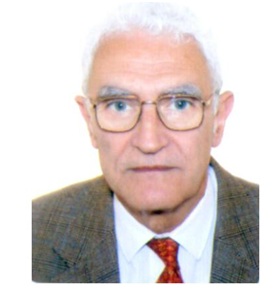Theme: Beat the Diabetes
Diabetologists 2018
The exciting and innovative program brought together national and international experts to promote the exchange of the latest Diabetes management practices and cutting edge research in diabetes. State-of-the-Art lectures, free communication sessions and scientific educational symposia, were appreciated by the 2017 attendees. With this enthusiastic support of our Organising Committee and Editorial Board Member, we are overwhelmed to announce “11th International Diabetologists Conference” (Diabetologists 2018)" as a continuum of our previous successful conference. Diabetologists 2018 will be held in New York, USA during May 23-24, 2018. The conference is themed as “Beat the Diabetes”
The program organising committee consists of members from all three societies and endeavours to present you with the latest and most exciting data from these respective fields with a range of international and national leading speakers. The benefits of this large scale collaborative meeting include: broader content areas, efficiency in meeting attendance and costs for delegates and trade partners, a more diverse variety of sessions, and increased attendees. Our scientific program includes invited plenary presentations, symposium and seminars, meet-the-professor sessions, basic and clinical abstract presentations, young investigator awards, and interactive poster sessions. Our speakers are drawn from a truly international profile, with themes in contemporary Diabetes and its related disorders and Therapies.
Conference Series LLC Ltd organizes 1000+ Global Events inclusive of 300+ Conferences, 500+ Upcoming and Previous Symposiums and Workshops in USA, Europe & Asia with support from 1000 more scientific societies and publishes 700+ Open access journals which contains over 30000 eminent personalities, reputed scientists as editorial board members
Why to Attend?
The meeting will provide many opportunities to network and discuss science and medicine, ensure equity of opportunity, find new funding and research opportunities, and build collaborations and contacts with international colleagues. We are sure that you will find this to be a truly exciting meeting presenting both the breadth and depth of clinical and basic research. Trade partners will have exposure to more areas of specialties in Diabetes and Endocrinology. World Class Speakers and Fresh New Talent from across the Globe in Health Industry gather in this world congress.
Target Audience
- Diabetologists
- Endocrinologists
- Doctors
- Researchers
- Physicians
- Business Professionals
- Academic Professionals
- Students
- Scientists
- Medical and Pharma Companies
- Medical Colleges and Hospitals
- Diabetes Societies and Associations
We wish to meet you @Diabetologists2018
“11th International Diabetologists Conference” is going to be held during May 23-24, 2018 in New York, USA. Diabetologists 2018 conference gathers renowned scientists, physicians, surgeons, young researchers, industrial delegates and talented student communities in the field of diabetic medicine under a single roof where networking and global partnering happens for the acceleration of future research.
The conference throws light on thought provoking topics and recent research in the field of Diabetic Medications like, Type 1 Diabetes- Therapies and treatments, Type 2 Diabetes- Therapies and treatments, Diabetic Neuropathy-Treatment and Care, Management of Diabetic Heart Diseases, Management of Diabetic Kidney Diseases, Clinical Diabetic Therapeutics & Management, Islet Biology and Beta cell targeting, Computational Approaches for Diabetes, and many more. The organizing committee is gearing up for an exciting and informative conference program including plenary lectures, symposia, workshops on a variety of topics, poster presentations and various programs for participants from all over the world. We invite you to join Diabetes International Conference, where you are sure to have a meaningful experience with scholars from around the world. All the Organizing Committee Members of the Diabetologists 2017 conference look forward to meet you in New York, USA.
For more details please visit- http://annualmeeting.conferenceseries.com/diabetologists/
Importance & Scope:
The prevalence of diabetes for all age-groups worldwide was estimated to be 2.8% in 2000 and 4.4% in 2030. The total number of people with diabetes is projected to rise from 171 million in 2000 to 366 million in 2030. The prevalence of diabetes is higher in men than women, but there are more women with diabetes than men. The urban population in developing countries is projected to double between 2000 and 2030. The most important demographic change to diabetes prevalence across the world appears to be the increase in the proportion of people >65 years of age. These findings indicate that the “diabetes epidemic” will continue even if levels of obesity remain constant. Given the increasing prevalence of obesity, it is likely that these figures provide an underestimate of future diabetes prevalence.
The number of people with diabetes has risen from 108 million in 1980 to 422 million in 2014. The global prevalence of diabetes* among adults over 18 years of age has risen from 4.7% in 1980 to 8.5% in 2014. In 2012, an estimated 1.5 million deaths were directly caused by diabetes and another 2.2 million deaths were attributable to high blood glucose. Almost half of all deaths attributable to high blood glucose occur before the age of 70 years1. WHO projects that diabetes will be the 7th leading cause of death in 2030.
Diabetologists 2018 will feature the latest developments in research, diagnosis and prevention and management of diabetes, new insulin analogues and new technologies and devices for diabetic prevention, and for treating obesity and many more. Not only will this innovative conference enhance your practical and theoretical knowledge, it will provide you with the unique opportunity to network with a wide range of professionals in the field of diabetes technologies and treatments.
Societies Associated with Diabetes Research
- Association National Italian Diabetic Athletes
- International Diabetes Federation- Italy
- Primary Care Diabetes Society
- FAND - Italian Association of Diabetics
- Italian Association for the Defence of the Interests of Diabetics
Diabetets Association
- Italian Society of Diabetology
- Australian Diabetes Society
- Emirates Diabetes Society
- Society for Biomedica Diabetes Research
- Diabetes Association of Nigeria
- Association of Children's Diabetes Clinicians
Today’s Market Study of Diabetes in USA | Europe | Middle East | Asia Pacific
Europe: The number of people living with diabetes in Europe is expected to increase from 52 million in 2014 to 68.9 million by 2035, according to the International Diabetes Federation (IDF). Across Europe, around 1 in 11 adults is affected and this number is set to rise as the population ages.
USA: Diabetes Mellitus has been growing at an exponential rate and World Health Organization (WHO) estimates that the diabetic population is likely to reach 366 million in 2030. The United States is expected to have an increase of 102 per cent in the diabetic epidemic in 2030 when compared to 2000.
Middle East: The rate of diabetes in parts of the Arabian Peninsula is over twice the global average rate, and much higher than some other areas of the Middle East and North Africa (MENA). And cases of type-2 diabetes outnumber cases of type-1 diabetes by a ratio of 10:1.
Asia Pacific: The Asia-Pacific Diabetes Care Devices Market has been estimated at USD 2.461 Billion in 2015 and is projected to reach USD 3.518 billion by 2020, at a CAGR of 7.41% during the forecast period from 2015 to 2020.
Market Value on Diabetic Research:
The impact of diabetes on the individual quality of life and general economy in Italy is substantial. Healthcare costs for patients with diabetes in Italy are estimated at approximately €5.5 billion annually, representing more than 6% of total national healthcare spending. The Cost of Diabetes in Europe—Type 2 Study(CODE-2), which measured the total healthcare costs for patients with type 2 diabetes in 8 European countries (Italy, Belgium, France, Germany, Netherlands, Spain, Sweden, and UK), found the total yearly (1998) costs for people with type 2 diabetes in Italy alone to be almost €5.2 billion, a per-patient expenditure of at least €2900. Among patients with type 2 diabetes in Italy examined by the CODE-2 study, 17.8% were hospitalized during the 6 month study, with an average hospital stay of 13 days. The cost of hospitalizations accounted for the greatest portion of total costs for all countries in the study, at 55%, leading non-anti diabetic drugs (21%), outpatient care (18%) and anti-diabetic drugs (7%).[3] Among non-anti diabetic drugs, the majority were cardiovascular and lipid-lowering (42%).[3] Annual per-patient costs vary widely with primary treatment type, with the highest per-patient costs accrued by those treated with diet and exercise alone.
Track 1: Diabetes & Oral Health
Periodontal disease is the most common dental disease affecting those living with diabetes, affecting nearly 22% of those diagnosed. Especially with increasing age, poor blood sugar control increases the risk for gum problems. In fact, people with diabetes are at a higher risk for gum problems because of poor blood sugar control. As with all infections, serious gum disease may cause blood sugar to rise. This makes diabetes harder to control because you are more susceptible to infections and are less able to fight the bacteria invading the gums.
Related Conferences: 22nd International Congress on Prevention of Diabetes and Complications October 12-13, 2017 London, UK; 9th Annual Congress on Endocrine Disorders and Therapies October 30- November 1, 2017; 23rd International Conference on Herbal and Alternative Remedies for Diabetes and Endocrine Disorders November 2-4, 2017 Bangkok, Thailand; 25th Global Diabetes Summit and Medicare Expo December 04-05, 2017 Dubai, UAE; 10th International Conference on Endocrinology October 30-November 01, 2017 Chicago, Illinois, USA; 17th Global Diabetes Conference and Medicare Expo March 8-9, 2018 Paris, France; 27th European Diabetes Congress June 11-12, 2018 Rome, Italy; 20th Asia Pacific Diabetes Conference July 9-11, 2018 Sydney, Australia; International Conference on Diabetes and its Complications May 21-22,2018 Osaka, Japan
Track 2: Diabetes Complications
The Diabetic Complications chiefly includes injurious effects of hyperglycemia which are primarily separated into macro vascular complications and micro vascular complications. Macro vascular complication chiefly includes retinopathy and micro vascular includes neuropathy. Diabetic retinopathy is also the foremost common micro vascular complication of diabetes. It is responsible for 10,000 new cases of blindness every year in the United States alone. The risk of developing diabetic retinopathy or other micro vascular complications of diabetes depends on both the duration and the severity of hyperglycemia. Diabetic nephropathy is the leading cause of renal failure in the United States. It is defined by proteinuria > 500 mg in 24 hours within the setting of however this can be preceded by lower degrees of proteinuria, or “micro albuminuria.
Related Conferences: 23rd International Conference on Herbal and Alternative Remedies for Diabetes and Endocrine Disorders November 2-4, 2017 Bangkok, Thailand; 25th Global Diabetes Summit and Medicare Expo December 04-05, 2017 Dubai, UAE; 10th International Conference on Endocrinology October 30-November 01, 2017 Chicago, Illinois, USA; 17th Global Diabetes Conference and Medicare Expo March 8-9, 2018 Paris, France; 27th European Diabetes Congress June 11-12, 2018 Rome, Italy; 20th Asia Pacific Diabetes Conference July 9-11, 2018 Sydney, Australia; International Conference on Diabetes and its Complications May 21-22,2018 Osaka, Japan;22nd International Congress on Prevention of Diabetes and Complications October 12-13, 2017 London, UK; 9th Annual Congress on Endocrine Disorders and Therapies October 30- November 1, 2017;
Track 3 : Influence of genetics on Diabetes
Several gene mutations have been linked to the development of type 2 diabetes. These gene mutations can interact with the environment and each other to further increase your risk. Type 2 diabetes is caused by both genetic and environmental factors.
Scientists have linked several gene mutations to a higher diabetes risk. Not everyone who carries a mutation will get diabetes. But many people with diabetes do have one or more of these mutations.
It can be difficult to separate genetic risk from environmental risk. The latter is often influenced by your family members. For example, parents with healthy eating habits are likely to pass them on to the next generation. On the other hand, genetics plays a big part in determining weight.
Mutations in any gene involved in controlling glucose levels can increase your risk of type 2 Diabetes. These include genes that control:
- · production of glucose
- · production and regulation of insulin
- How glucose levels are sensed in the body
Related Conferences: 20th Asia Pacific Diabetes Conference DiabetesJuly 9-11, 2018 Sydney, Australia; International Conference on Diabetes and its Complications May 21-22,2018 Osaka, Japan; 22nd International Congress on Prevention of Diabetes and Complications October 12-13, 2017 London, UK; 9th Annual Congress on Endocrine Disorders and Therapies October 30- November 1, 2017; 23rd International Conference on Herbal and Alternative Remedies for Diabetes and Endocrine Disorders November 2-4, 2017 Bangkok, Thailand; 25th Global Diabetes Summit and Medicare Expo December 04-05, 2017 DiabetesDubai, UAE; 27th European Diabetes Congress June 11-12, 2018 Rome, Italy.
Track 4: Diabetic Retinopathy
Diabetic retinopathy is caused by changes in the blood vessels of the retina, the thin, light-sensitive inner lining in the back of your eye. This damage, called retinopathy, occurs to small blood vessels in the retina, which are easily harmed by high levels of glucose in the blood. There are two stages of diabetic retinopathy—an initial stage, which is called nonproliferative retinopathy, and a more serious stage called proliferative retinopathy, in which there is a greater risk of hemorrhage into the vitreous or detachment of the retina leading to severe vision loss. Another condition, called diabetic macular edema, can occur with either stage.
In the early nonproliferative stage, high levels of blood glucose cause damage to the blood vessels in the retina. They actually can leak fluid, which can collect and cause the retina to swell. If fluid collects in the central part of the retina (macular edema), blurred vision may occur. Macular edema can be treated with laser surgery when central vision is threatened.
A more dangerous stage of eye disease from Diabetes is proliferative retinopathy. During this stage, abnormal blood vessels grow over the surface of the retina. These fragile blood vessels may rupture and bleed into the vitreous humor, the clear gel that fills the center of the eye. With vitreous hemorrhage, the blood blocks the passage of light to the retina and loss of vision or even blindness may occur. A further problem can occur when these blood vessels cause scar tissue, which may pull on the retina and cause it to become detached from the back of the eye. About half of the people with proliferative retinopathy also have macular edema. Proliferative diabetic retinopathy can also be treated with laser surgery to preserve vision and reduce the risk of severe vision loss to less than 5%. Additionally, vitreous hemorrhage that does not resolve, or scar tissue causing traction on the retina, can be removed by a surgical procedure called vitrectomy.
Related Conferences: 25th Global Diabetes Summit and Medicare Expo December 04-05, 2017 Dubai, UAE; 27th European Diabetes Congress June 11-12, 2018 Rome, Italy; Diabetes 20th Asia Pacific Diabetes Conference July 9-11, 2018 Sydney, Australia; International Conference on Diabetes and its Complications May 21-22,2018 Osaka, Japan; 22nd International Congress on Prevention of Diabetes and Complications October 12-13, 2017 London, UK; 9th Annual Congress on Endocrine Disorders and Therapies October 30- November 1, 2017; 23rd International Conference on Herbal and Alternative Remedies for Diabetes and Endocrine Disorders November 2-4, 2017 Bangkok, Thailand;
Track 5: Diabetic Nephropathy
Diabetes causes injury to small blood vessels in the body.
When the blood vessels in the kidneys are injured, your kidneys cannot clean your blood properly. Your body will retain more water and salt than it should, which can result in weight gain and ankle swelling. You may have protein in your urine. Also, waste materials will build up in your blood.
Diabetes also may cause damage to nerves in your body. This can cause difficulty in emptying your bladder. The pressure resulting from your full bladder can back up and injure the kidneys. Also, if urine remains in your bladder for a long time, you can develop an infection from the rapid growth of bacteria in urine that has a high sugar level.
About 30 percent of patients with Type 1 (juvenile onset) diabetes and 10 to 40 percent of those with Type 2 (adult onset) diabetes eventually will suffer from kidney failure.
The earliest sign of diabetic kidney disease is an increased excretion of albumin in the urine.
Related Conferences: 20th Asia Pacific Diabetes Conference DiabetesJuly 9-11, 2018 Sydney, Australia; International Conference on Diabetes and its Complications May 21-22,2018 Osaka, Japan; 25th Global Diabetes Summit and Medicare Expo December 04-05, 2017 Dubai, UAE; 27th European Diabetes Congress June 11-12, 2018 Rome, Italy; 22nd International Congress on Prevention of Diabetes and Complications October 12-13, 2017 London, UK; 9th Annual Congress on Endocrine Disorders and Therapies DiabetesOctober 30- November 1, 2017; 23rd International Conference on Herbal and Alternative Remedies for Diabetes and Endocrine Disorders November 2-4, 2017 Bangkok, Thailand;
Track 6: Diabetic Transplantations
Type 1 diabetes results from the destruction of insulin-producing cells in the islets of the pancreas. Islet cell transplantation involves extracting islet cells from the pancreas of a deceased donor and implanting them in the liver of someone with Type 1. This minor procedure is usually done twice for each transplant patient, and can be performed with minimal risk using a needle under local anaesthetic. Islet transplants have been shown to reduce the risk of severe hypos. Results from UK islet transplant patients showed that the frequency of hypos was reduced from 23 per person per year before transplantation to less than one hypo per person per year afterwards.
Islet transplants usually also lead to improved awareness of hypoglycaemia, less variability in blood glucose levels, improved average blood glucose, improved quality of life and reduced fear of hypos. Long-term results are good and are improving all the time. For example, the majority of transplant patients can now expect to have a functioning transplant after six years and some people have had more than 10 years of clinical benefit.
Post-transplantation Diabetes (PTDM), also known as new-onset diabetes mellitus (NODM), occurs in 10–15% of renal transplant recipients and is associated with cardiovascular disease and reduced lifespan. In the majority of cases, PTDM is characterized by β-cell dysfunction, as well as reduced insulin sensitivity in liver, muscle and adipose tissue. Glucose-lowering therapy must be compatible with immunosuppressant agents, reduced glomerular filtration rate (GFR) and severe arteriosclerosis. Such therapy should not place the patient at risk by inducing hypoglycaemic episodes or exacerbating renal function owing to adverse gastrointestinal effects with hypoglycaemic.
Related Conferences: 20th Asia Pacific Diabetes Conference July 9-11, 2018 Sydney, Australia; International Conference on Diabetes and its Complications Diabetes May 21-22,2018 Osaka, Japan; 25th Global Diabetes Summit and Medicare Expo December 04-05, 2017 Dubai, UAE; 27th European Diabetes Congress June 11-12, 2018 Rome, Italy; 22nd International Congress on Prevention of Diabetes and Complications October 12-13, 2017 London, UK; 9th Annual Congress on Endocrine Disorders and Therapies October 30- November 1, 2017; 23rd International Conference on Herbal and Alternative Remedies for Diabetes and Endocrine Disorders November 2-4, 2017 Bangkok, Thailand;
Track 7 : Pediatric Diabetes
Pediatrics is the field of medicine that is concerned with the health of infants, children, and adolescents; their growth and development; and their chance to attain full potential as adults. General medicine includes the essential treatments concerned for the betterment of pediatric health. The most significant problems can be due to nutritional deficiencies to the overall health of infants and kids as a result of growth and development is seriously hindered by shortages in essential vitamins or nutrients. The aim of the study of pediatrics is to reduce infant and child rate of deaths, management the unfold of communicable disease, promote healthy lifestyles for a long disease-free life and help ease the problems of children and adolescents. It can be acknowledged that this can be reached by learning the major and primary subject on Pediatrics.
Related Conferences: 25th Global Diabetes Summit and Medicare Expo Diabetes December 04-05, 2017 Dubai, UAE; 27th European Diabetes Congress June 11-12, 2018 Rome, Italy; 22nd International Congress on Prevention of Diabetes and Complications October 12-13, 2017 London, UK; 9th Annual Congress on Endocrine Disorders and Therapies October 30- November 1, 2017; 23rd International Conference on Herbal and Alternative Remedies for Diabetes and Endocrine Disorders November 2-4, 2017 Bangkok, Thailand; 20th Asia Pacific Diabetes Conference Diabetes July 9-11, 2018 Sydney, Australia; International Conference on Diabetes and its Complications May 21-22,2018 Osaka, Japan
Track 8: Diabetes: Research
There is wide research going on in the field of cure, prevention and management of Diabetes. Researchers are trying to develop therapies and drugs which should not create any side effects to the patients of Diabetes. New researches are opening the help door for patients having rare form of Diabetes too for e.g. Diabetes caused by single gene mutations which is called as “monogenic” form of diabetes. They have also created insulin patches that imitated the body’s beta cells by both sensing blood glucose level and releasing insulin. Many more researches are going on in the field of Diabetes i.e. Diabetes –depression connection, very low effort muscular activity and Diabetes risk and aerobic exercise improve brain function for people with prediabetes.
Related Conferences:Diabetes 23rd International Conference on Herbal and Alternative Remedies for Diabetes and Endocrine Disorders November 2-4, 2017 Bangkok, Thailand; 20th Asia Pacific Diabetes Conference July 9-11, 2018 Sydney, Australia; International Conference on Diabetes and its Complications May 21-22,2018 Osaka, Japan; 25th Global Diabetes Summit and Medicare Expo December 04-05, 2017 Dubai, UAE; 27th European Diabetes Congress June 11-12, 2018 Rome, Italy; 22nd International Congress on Prevention of Diabetes and Complications October 12-13, 2017 London, UK Diabetes; 9th Annual Congress on Endocrine Disorders and Therapies October 30- November 1, 2017;
Track 9: Diabetes & Heart Diseases
Heart disease is a complication that may affect people with diabetes if their condition is not managed well for a prolonged period of time. Coronary heart disease is recognized to be the cause of death for 80% of people with diabetes; however, the NHS states that heart attacks are largely preventable. People suffering from type 1 and type 2 diabetes are more likely to be at risk from heart attacks, strokes and high blood pressure. Vascular problems, such as poor circulation to the legs and feet, are also more likely to affect diabetes patients. Like Diabetes itself, the symptoms of cardiovascular disease may go undetected for years.
Related Conferences: 20th Asia Pacific Diabetes Conference July 9-11, 2018 Sydney, Australia; International Conference on Diabetes and its Complications May 21-22,2018 Osaka, Japan; 25th Global Diabetes Summit and Medicare Expo December 04-05, 2017 Dubai, Diabetes UAE;23rd International Conference on Herbal and Alternative Remedies for Diabetes and Endocrine Disorders Diabetes November 2-4, 2017 Bangkok, Thailand; 27th European Diabetes Congress June 11-12, 2018 Rome, Italy; 22nd International Congress on Prevention of Diabetes and Complications October 12-13, 2017 London, UK; 9th Annual Congress on Endocrine Disorders and Therapies October 30- November 1, 2017 Diabetes ;
Track 10: Diabetes & Dermatology
There can be many types of diseases associated with skin which can be caused by Diabetes:
- Necrobiosis Lipoidica
- Acanthosis Nigricans
- Cutaneous Infections associated with DM
- Granuloma Annulare
- Diabetic Bullae
- Diabetic Dermopathy (shin spots)
Like Diabetic Dermopathy occur in up to 40% of people with diabetes. It is the most common cutaneous manifestation of diabetes (not pathognomic.) In these initial dull red papules, 0.5-1cm in diameter appears and are Generally bilateral and asymptomatic.
Related Conferences: 20th Asia Pacific Diabetes Conference Diabetes July 9-11, 2018 Sydney, Australia; International Conference on Diabetes and its Complications May 21-22,2018 Osaka, Japan; 25th Global Diabetes Summit and Medicare Expo December 04-05, 2017 Dubai, UAE;23rd International Conference on Herbal and Alternative Remedies for Diabetes and Endocrine Disorders November 2-4, 2017 Bangkok, Thailand; 27th European Diabetes Congress June 11-12, 2018 Rome, Italy; 22nd International Congress on Prevention of Diabetes and Complications October 12-13, 2017 London, UK; 9th Annual Congress on Endocrine Disorders and Therapies October 30- November 1, 2017;
Track 11: Management of Diabetes
The supervision of diabetes has been resolutely grounded in scientific advances that endure to stipulate our understanding of the pathophysiology of diabetes and direct our selection in selecting optimal therapies for type 1 and type 2 diabetes. Common risk factors or symptoms of Diabetes include increased weight, blood pressure, cholesterol and triglyceride (blood fat) levels. The main goal of diabetes management is, as far as possible, to restore carbohydrate metabolism to a normal state. To achieve this goal, individuals with an absolute deficiency of insulin require insulin replacement therapy, which is given through injections or an insulin pump. Research on Insulin is extensively discussed in National Diabetes Conference and Diabetes associations
Related Conferences: 20th Asia Pacific Diabetes Conference July 9-11, 2018 Sydney, Australia; International Conference on Diabetes and its Complications May 21-22,2018 Osaka, Japan; 25th Global Diabetes Summit and Medicare Expo December 04-05, 2017 Dubai, UAE;23rd International Conference on Herbal and Alternative Remedies for Diabetes and Endocrine Disorders November 2-4, 2017 Bangkok, Thailand; 27th European Diabetes Congress June 11-12, 2018 Rome, Italy; 22nd International Congress on Prevention of Diabetes and Complications October 12-13, 2017 London, UK; 9th Annual Congress on Endocrine Disorders and Therapies October 30- November 1, 2017;
Track 12: Cellular and Molecular Endocrinology
Endocrinology can be defined as a branch of biology that mainly deals with the study of endocrine system and related functions, secretions and diseases. Endocrine contains various glands. Every gland has its own secretion, known as hormone that performs specific functions.
Clinical endocrinology is a branch of medical sciences that involves the diagnosis, cure, prevention and treatment of irregular secretion and modified action of hormones. Molecular endocrinology, basically deals with the study of various functions of hormones secreted by different glands, at molecular level.
Molecular and Cellular Endocrinology focuses on molecular and cellular mechanisms in endocrinology by including: gene regulation, cell biology, signaling, mutations, transgenics, hormone-dependant cancers, nuclear receptors. Basic and pathophysiological studies at the molecule and cell level are considered.
Related Conferences: 20th Asia Pacific Diabetes Conference July 9-11, 2018 Sydney, Australia; International Conference on Diabetes and its Complications May 21-22,2018 Osaka, Japan; 25th Global Diabetes Summit and Medicare Expo December 04-05, 2017 Dubai, UAE;23rd International Conference on Herbal and Alternative Remedies for Diabetes and Endocrine Disorders Diabetes November 2-4, 2017 Bangkok, Thailand; 27th European Diabetes Congress June 11-12, 2018 Rome, Italy; 22nd International Congress on Prevention of Diabetes and Complications October 12-13, 2017 London, UK; 9th Annual Congress on Endocrine Disorders and Therapies October 30- November 1, 2017;
Track 13: Diabetes Science & Technology
The concept of and new discovery and emerging therapies like reverse diabetes for the treatment of diabetes has expanded in recent years. There is a lot of latest research on diabetes happening and elaborated at IDF diabetes 2016 and the latest includes some very rare forms of diabetes which are caused by single gene mutations. They are called "monogenic" forms of diabetes and new research is opening the door to specific treatments for these patients. With the advanced type1 diabetes treatment various devices e.g. insulin pumps which is used for the administration of insulin , rapid HbA1c monitoring, insulin pen, biomarkers, biostator, artificial pancreas and etc. are formed for the treatment. Number of innovation and treatment are increasing with the increase in research work by Research and development department in various sectors and endocrinology is getting treatment with these devices. Continuous Glucose Monitoring (CGM) is a relatively new technology which has the potential to assist people living with type 1 or type 2 Diabetes and treated with insulin to achieve the goal of optimum control of blood glucose. This will remove the diabetes cholesterol.
Related Conferences: 20th Asia Pacific Diabetes Conference July 9-11, 2018 Sydney, Australia; International Conference on Diabetes and its Complications Diabetes May 21-22,2018 Osaka, Japan; 25th Global Diabetes Summit and Medicare Expo December 04-05, 2017 Dubai, UAE;23rd International Conference on Herbal and Alternative Remedies for Diabetes and Endocrine Disorders November 2-4, 2017 Bangkok, Thailand; 27th European Diabetes Congress June 11-12, 2018 Rome, Italy; 22nd International Congress on Prevention of Diabetes and Complications October 12-13, 2017 London, UK; 9th Annual Congress on Endocrine Disorders and Therapies October 30- November 1, 2017;
Bell Medical will be introducing the Xavant Stimpod NMS 460 to the meeting attendees. The STIMPOD NMS460 is a nerve stimulator that delivers a patented Pulsed Radio Frequency (PRF) wave form that is superimposed upon the current. The stimulation probe and the patented PRF waveform allows for the treatment of neuropathies in a non-invasive manner targeting the nerve.
Case studies include treatment for:
- Diabetic Neuropathy
- Diabetic related numbness or pain
- Pins and needles type pain
- Migraine headaches
- Bell’s palsy
- Golfer’s and Tennis Elbow
- Sciatica
- Arthritis joint pain
- Neuropathies
Visit the exhibit booth of Bell Medical STIMPOD for more detail on NMS460 !!
Conference Highlights
- Diabetes & Oral Health
- Diabetes Complications
- Influence of genetics on Diabetes
- Diabetic Retinopathy
- Diabetic Nephropathy
- Diabetic Transplantations
- Pediatric Diabetes
- Diabetes: Research
- Diabetes & Heart Diseases
- Diabetes & Dermatology
- Management of Diabetes
- Cellular and Molecular Endocrinology
- Diabetes Science & Technology
To share your views and research, please click here to register for the Conference.
To Collaborate Scientific Professionals around the World
| Conference Date | May 23-24, 2018 | ||
| Sponsors & Exhibitors |
|
||
| Speaker Opportunity Closed | Day 1 | Day 2 | |
| Poster Opportunity Closed | Click Here to View | ||
Useful Links
Special Issues
All accepted abstracts will be published in respective Our International Journals.
Abstracts will be provided with Digital Object Identifier by

















